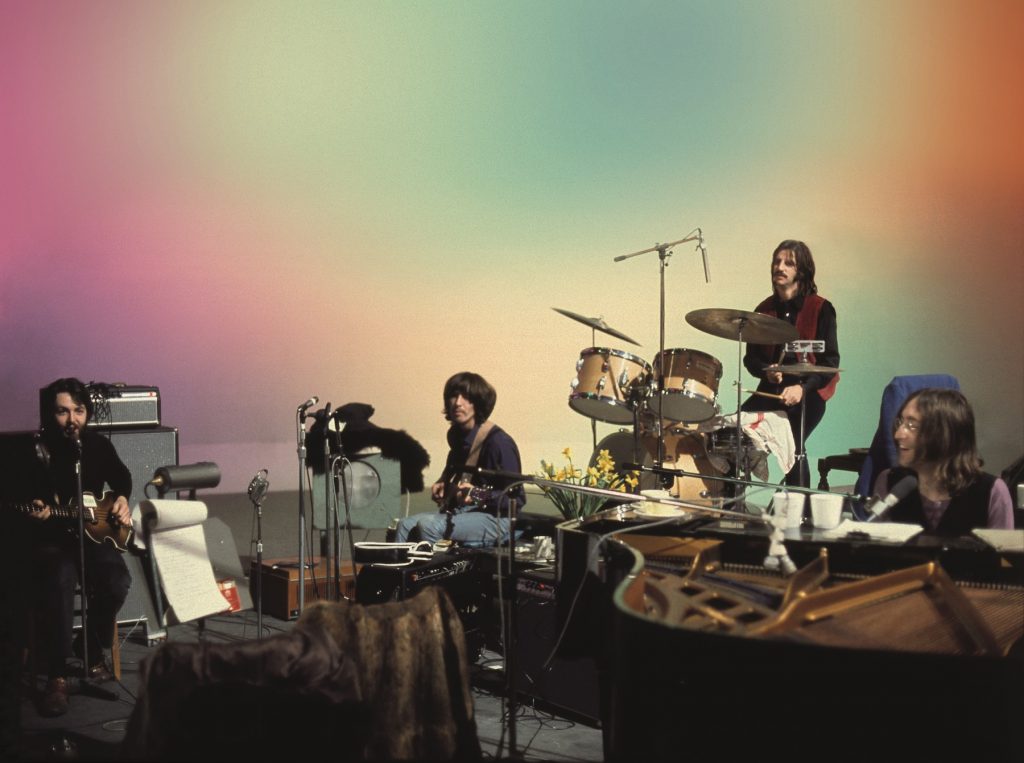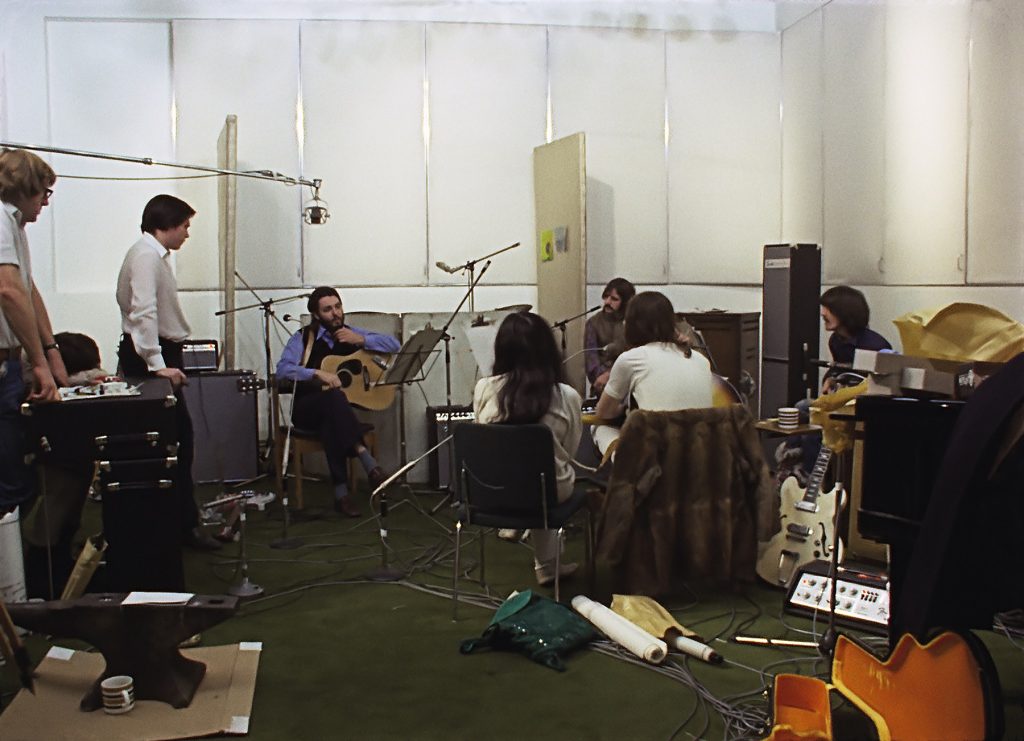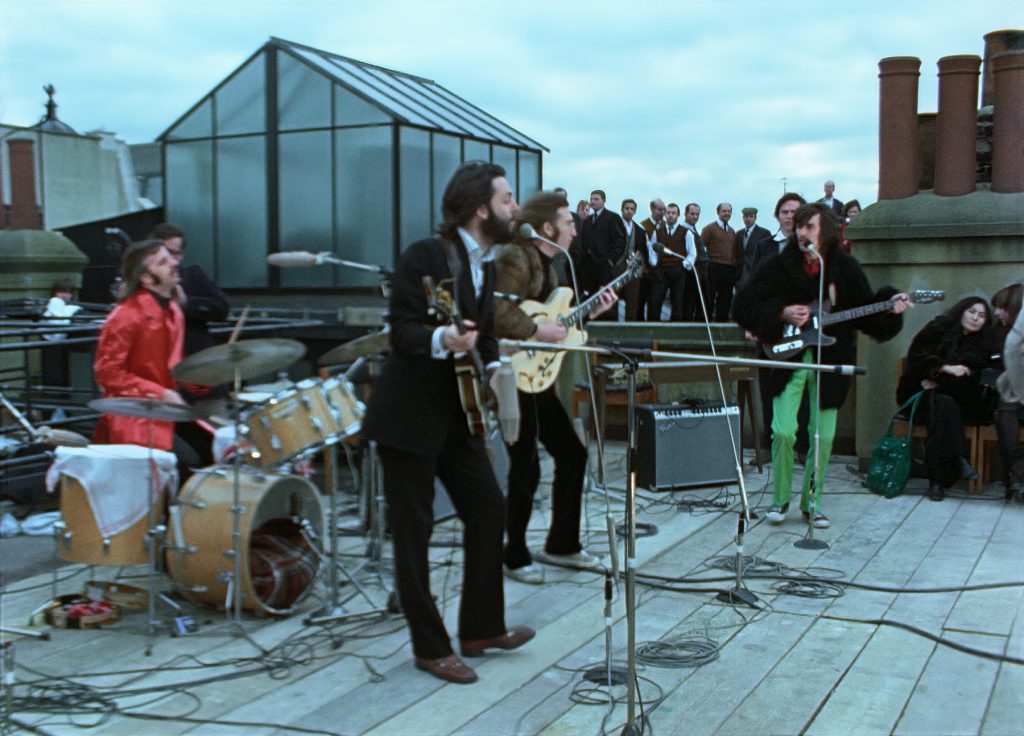The Disney+ docuseries The Beatles: Get Back is fascinating to watch on a number of fronts.

Firstly, there’s the chance to observe the creative process of the Beatles, who are still the world’s top selling band. In addition, it’s informative to watch the interaction between group members and their loved ones.
The three part series also presents in its entirety The Beatles’ last live performance as a group – the rooftop concert on London’s Savile Row. And finally it illustrates what new technology can do in restoring old footage.
Directed by three-time Oscar-winning filmmaker Peter Jackson, The Beatles: Get Back takes audiences to the band’s January 1969 recording sessions, which became a pivotal moment in music history.
The docuseries is compiled from nearly 60 hours of unseen footage shot over 21 days, directed by Michael Lindsay-Hogg in 1969, and from more than 150 hours of unheard audio, most of which has been locked in a vault for over half a century. Jackson is the only person to be given access to the vault.
Use of the latest technology to edit the original footage makes it hard to believe it was shot in 1969. It’s no surprise to discover it took 14 technicians four years to transform the original footage to the more than six hours included in The Beatles: Get Back.

Some of the footage featured in Michael Lindsay-Hogg’s documentary which was released in May 1970. However, this documentary wasn’t well received due to the production quality and the decision to only include footage of songs featured on the Let It Be album.
Furthermore The Beatles had officially broken up three weeks before the documentary’s release, so the film was associated with the break-up. Rumors had begun circulating that some of the band members were miserable throughout the recording sessions, so audiences also felt they were watching the demise of the band.
However, Jackson’s offering shows just the opposite of this. What we see is a creative group of musicians laughing, joking and seemingly mostly comfortable in each other’s company as they write, rehearse, record and play 14 songs for a forthcoming album.
This album was to be recorded in front of an audience, released as a live album, and filmed for a television special.
Lindsay-Hogg was hired to document and record the sessions. While the TV concert didn’t go ahead Lindsay-Hogg continued to film The Beatles at work in the basement studio in Apple Corps’ offices at No. 3 Savile Row where they were joined by singer/pianist Billy Preston.
The cancellation of the television show meant a venue had to be chosen for a performance to close the documentary. The rooftop of 3 Saville Row was eventually chosen and here on January 30, John, Paul, George, and Ringo (along with Preston) staged an impromptu concert. The free performance, which was not scheduled or promoted, was heard by anyone within a three to four block vicinity.

Lindsay-Hogg had nine cameras filming the concert simultaneously to thoroughly document every moment from multiple vantage points. As well as watching the Beatles perform the other highlight of Jackson’s series is observing the actions of members of the public and a couple of London Metropolitan Police responding to noise complaints.
Another highlight is watching the creative rapport of the group with the interaction between Paul McCartney and John Lennon standing out.
At the same time it’s interesting to see who spends the most time with whom and the relationship between John Lennon and Yoko Ono. Given Paul McCartney, Ringo Starr and Yoko Ono Lennon are credited as co-producers with Jackson and several others it seems they are happy with the footage used in the docuseries. Beatles fans, budding musicians and history lovers are likely to be just as happy with The Beatles: Get Back.
The Beatles: Get Back is currently streaming on Disney+
- movie, reviews
Subscribe My Newsletter
Unsubscribe at any time.




